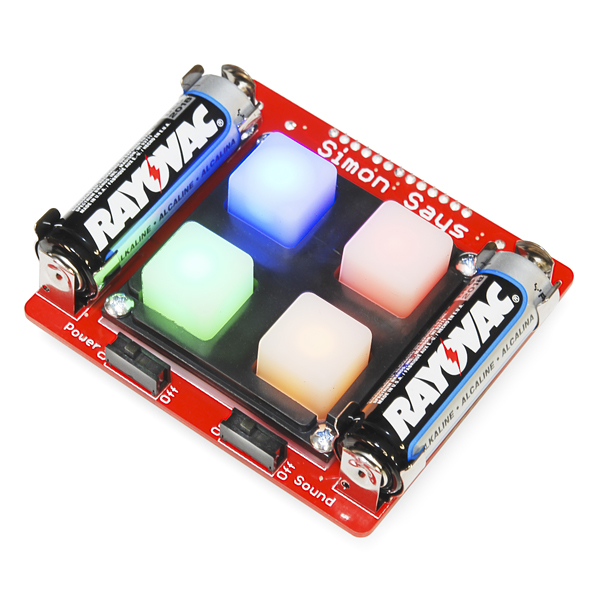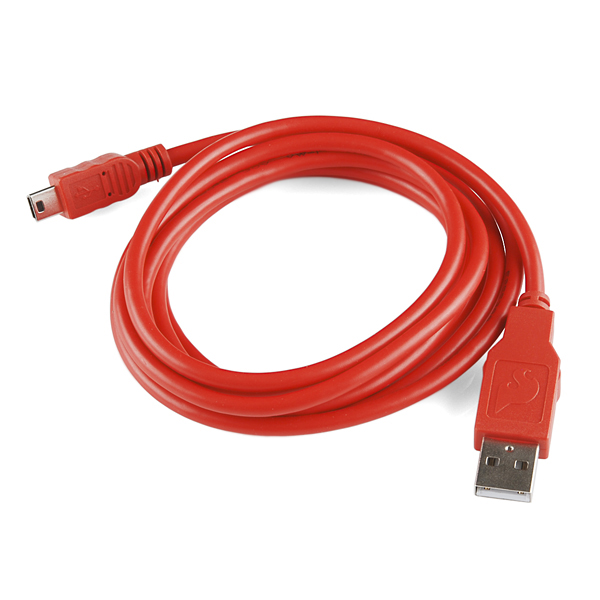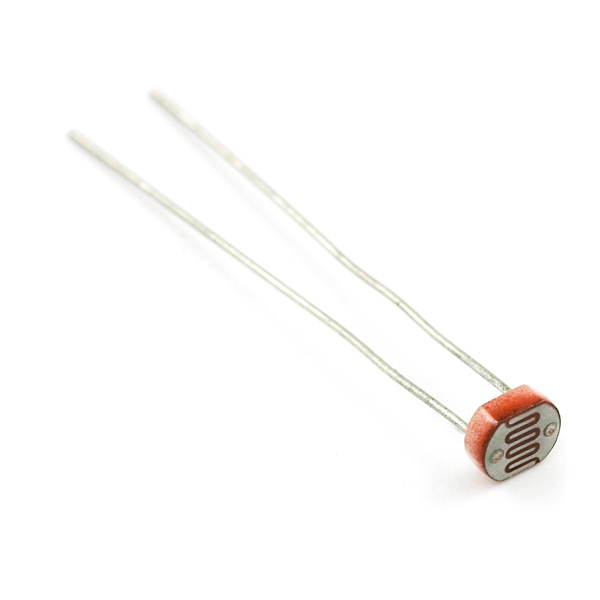Simon Lab Pack
We've been teaching soldering a lot over the past few years - the Simon through-hole soldering kit is a combination of everything we've learned. Now you can bring our Simon soldering and hacking classes to your own classroom, hackerspace or makerspace with the Simon Pack.
The Simon Pack contains everything you need to lead a 15-seat Simon soldering workshop (you'll need your own tools, of course) and once everyone's built their own working Simon game, we've included FTDI basic breakout board so that you can tweak the code or even use them as game controllers for the Processing language.
All components are through-hole, making this kit a great place to start when you're learning to solder. When building this kit, you'll have a chance to solder a 28-pin microprocessor, LEDs, battery clips and more.
The SparkFun education department has materials and curriculum available for your instructors so you can get students some beginner's soldering all the way through embedded programming!
- 15 x Simon through-hole soldering kits
- 20 x Miniature Photocells
- 25 x 10k Resistors
- 15 x 5V FTDI Basic Breakout
- 15 x 6' USB Mini-B Cables
- 3 x 40-pin Male Header Strips
- Assembly Instructions
- GitHub (Design Files & Example Code)
Simon Lab Pack Product Help and Resources
Simon Says Assembly Guide
January 20, 2011
No matter what flavor of the Simon Says Through-hole Soldering Kit you've purchased, this tutorial is here to guide you through the entire build process.
Simon Says Experiments
October 21, 2010
So you've built up a Simon Says kit? What next? This tutorial will get you up and running with Arduino software, guide you through a few example sketches, and send you on your way to create your own. Careful, this stuff is highly addictive. :)
Core Skill: Soldering
This skill defines how difficult the soldering is on a particular product. It might be a couple simple solder joints, or require special reflow tools.
Skill Level: Rookie - The number of pins increases, and you will have to determine polarity of components and some of the components might be a bit trickier or close together. You might need solder wick or flux.
See all skill levels
Core Skill: DIY
Whether it's for assembling a kit, hacking an enclosure, or creating your own parts; the DIY skill is all about knowing how to use tools and the techniques associated with them.
Skill Level: Noob - Basic assembly is required. You may need to provide your own basic tools like a screwdriver, hammer or scissors. Power tools or custom parts are not required. Instructions will be included and easy to follow. Sewing may be required, but only with included patterns.
See all skill levels
Core Skill: Electrical Prototyping
If it requires power, you need to know how much, what all the pins do, and how to hook it up. You may need to reference datasheets, schematics, and know the ins and outs of electronics.
Skill Level: Rookie - You may be required to know a bit more about the component, such as orientation, or how to hook it up, in addition to power requirements. You will need to understand polarized components.
See all skill levels
Comments
Looking for answers to technical questions?
We welcome your comments and suggestions below. However, if you are looking for solutions to technical questions please see our Technical Assistance page.
Customer Reviews
No reviews yet.







It sounds like an AMAZING DEAL compared to the inventors lab pack.
$500.00 what a great deal!!!!!! :-p